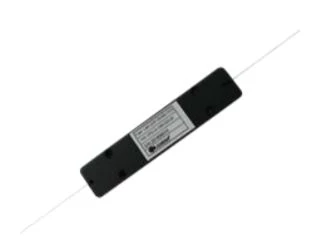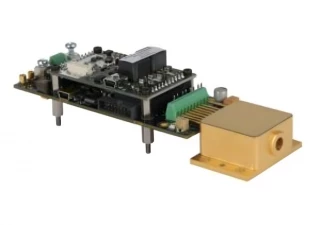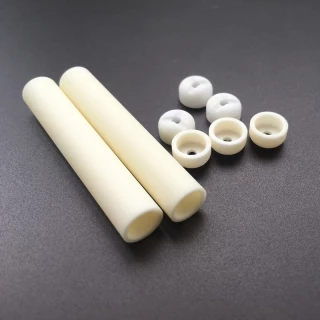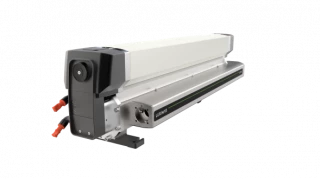Lasers
Discover a wide range of high-quality Lasers from over 450 trusted suppliers worldwide on FindLight. Browse a vast selection of Fiber Lasers, Semiconductor Lasers, Solid State Lasers, Ultrafast Lasers, and more. Whether you're looking for laser components, gas lasers, or dye lasers, FindLight has you covered. Get started today and find the perfect laser solution for your application.
Frequently Asked Questions
What is a Fiber Laser?
A fiber laser is a type of laser that uses an optical fiber as the active medium for amplification of light. Unlike other types of lasers that use solid-state or gas as the active medium, fiber lasers use a specially designed optical fiber that is doped with rare-earth ions such as erbium, ytterbium, or neodymium. When a pump source, such as a laser diode or an LED, is used to excite the rare-earth ions, they emit light that is amplified as it travels through the fiber. Fiber lasers are known for their high output power, high efficiency, and high beam quality, which make them suitable for a wide range of applications, including materials processing, telecommunications, medical devices, and scientific research.
What is a Diode Laser?
A diode laser (also known as "semiconductor laser") is a type of laser that uses a semiconductor material as the active medium for amplification of light. The semiconductor material is typically a p-n junction diode made of gallium arsenide or similar compounds. When an electrical current is applied to the diode, it generates a population inversion of electrons and holes, which allows the emission of coherent light when stimulated by an external source. Diode lasers are commonly used in a wide range of applications, including telecommunications, optical storage, laser printing, barcode scanning, laser pointers, and medical and cosmetic treatments. They are known for their compact size, low cost, and high efficiency, which make them an attractive option for many applications.
What is a solid state laser?
A solid-state laser is a type of laser that uses a solid-state material as the active medium for amplification of light. The solid-state material is typically a crystalline or glass material that is doped with ions of rare-earth metals such as neodymium, ytterbium, or erbium. When the material is excited with an external energy source, such as a flash lamp or a laser diode, the rare-earth ions emit coherent light that is amplified as it travels through the material. Solid-state lasers are used in a wide range of applications, including materials processing, medical devices, laser spectroscopy, and scientific research. They are known for their high output power, high efficiency, and excellent beam quality, which make them suitable for precision applications.
What is an Ultrafast Laser?
An ultrafast laser is a type of laser that emits extremely short pulses of light, typically on the order of femtoseconds (10^-15 seconds) or picoseconds (10^-12 seconds). These lasers use sophisticated techniques to generate and manipulate ultrafast pulses, such as mode-locking and chirped pulse amplification. Ultrafast lasers are used in a wide range of applications, including materials processing, micro- and nanofabrication, spectroscopy, microscopy, and medical and biomedical research. They are particularly useful for studying ultrafast phenomena, such as chemical reactions, electron dynamics, and biological processes, with high temporal and spatial resolution. The short pulse duration and high peak power of ultrafast lasers also enable them to induce nonlinear optical effects in materials, which can lead to new applications in areas such as photonics, telecommunications, and quantum information processing.
What is a Gas Laser?
A gas laser is a type of laser that uses a gas as the active medium for amplification of light. The gas is typically excited by an external energy source, such as an electrical discharge, and the resulting plasma of excited atoms and molecules emits coherent light as it decays to its ground state. Gas lasers can be made from a variety of gases, including helium-neon, argon, krypton, and carbon dioxide. They are used in a wide range of applications, including materials processing, medical devices, scientific research, and laser light shows. Gas lasers are known for their high beam quality, narrow linewidth, and tunability, which make them well-suited for spectroscopy and other precision applications. However, they are generally less efficient and more complex than other types of lasers, such as solid-state and semiconductor lasers.
What is a Dye Laser?
A dye laser is a type of laser that uses a liquid dye as the active medium for amplification of light. The dye is typically a complex organic molecule that is dissolved in a solvent, such as ethanol or methanol. When the dye is excited by an external energy source, such as a flash lamp or another laser, it emits coherent light as it decays to its ground state. The wavelength of the emitted light can be tuned over a wide range by changing the dye and the solvent, allowing for precise control over the laser output. Dye lasers are used in a wide range of applications, including spectroscopy, microscopy, photochemistry, and biomedical research. They are known for their high tuning range, narrow linewidth, and high output power, which make them useful for a variety of precision applications. However, they are generally less efficient and more complex than other types of lasers, such as solid-state and semiconductor lasers.
What are the different types of lasers available on FindLight?
FindLight offers a wide selection of lasers, including diode lasers, fiber lasers, gas lasers, solid-state lasers, semiconductor lasers, and more. These lasers can be used for various applications such as cutting, welding, engraving, sensing, and medical procedures.
What are the key factors to consider when selecting a laser?
The key factors to consider when selecting a laser include the wavelength of the laser, the output power, the beam quality, and the pulse width. Other factors to consider may include the size and weight of the laser, its operating temperature range, and its lifetime.
What are some common applications of lasers in industry?
Lasers are commonly used in industry for cutting, welding, marking, engraving, drilling, and micro-machining. They are also used in scientific research, medical procedures, and in telecommunications for data transmission.
Looking for lasers for your research, industrial, or medical applications? FindLight offers a vast selection of lasers from over 454 suppliers worldwide. Browse through our collection of fiber lasers, semiconductor lasers, solid-state lasers, ultrafast lasers, laser components, gas lasers, dye lasers, and more. Whether you're looking for a specific type of laser or need help finding the right one for your application, our platform makes it easy to search, compare, and get free quotes from multiple suppliers. Start exploring our laser offerings today and take your research, manufacturing, or medical procedures to the next level.






